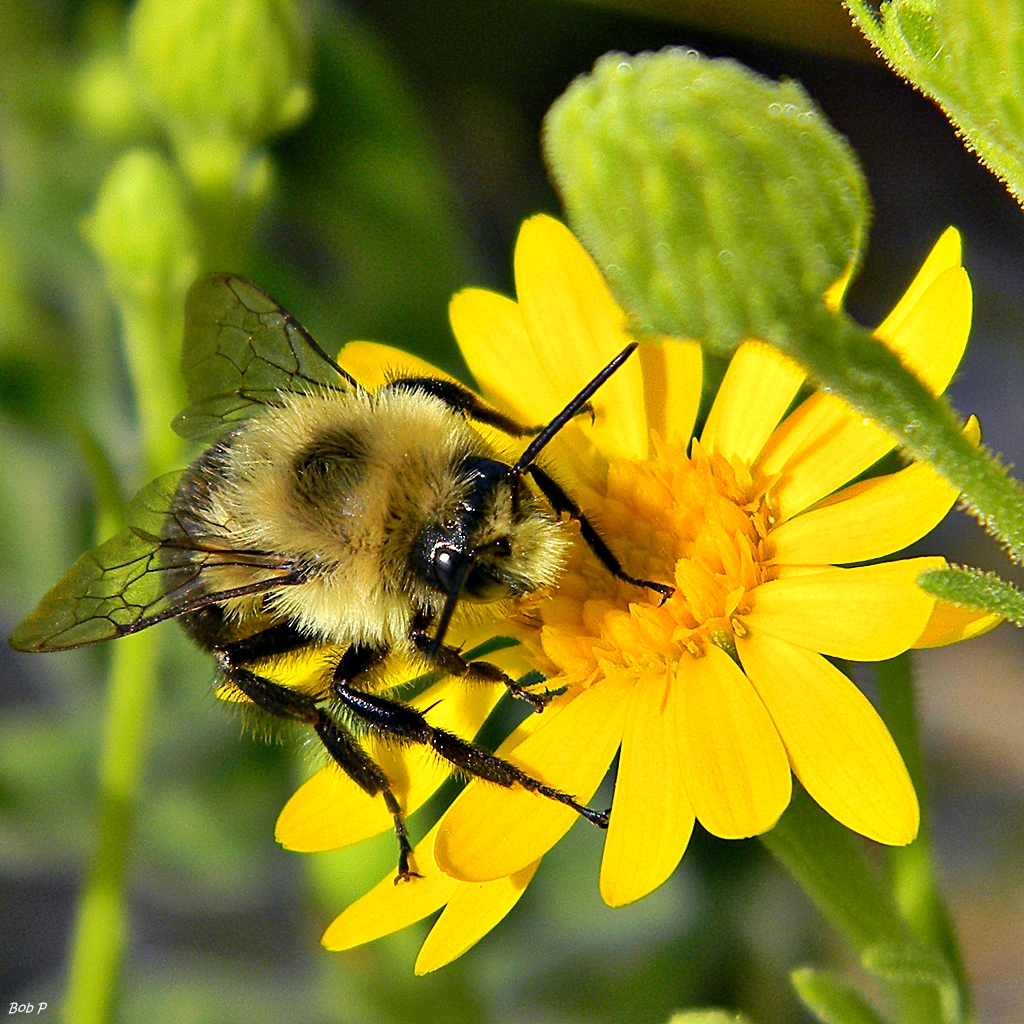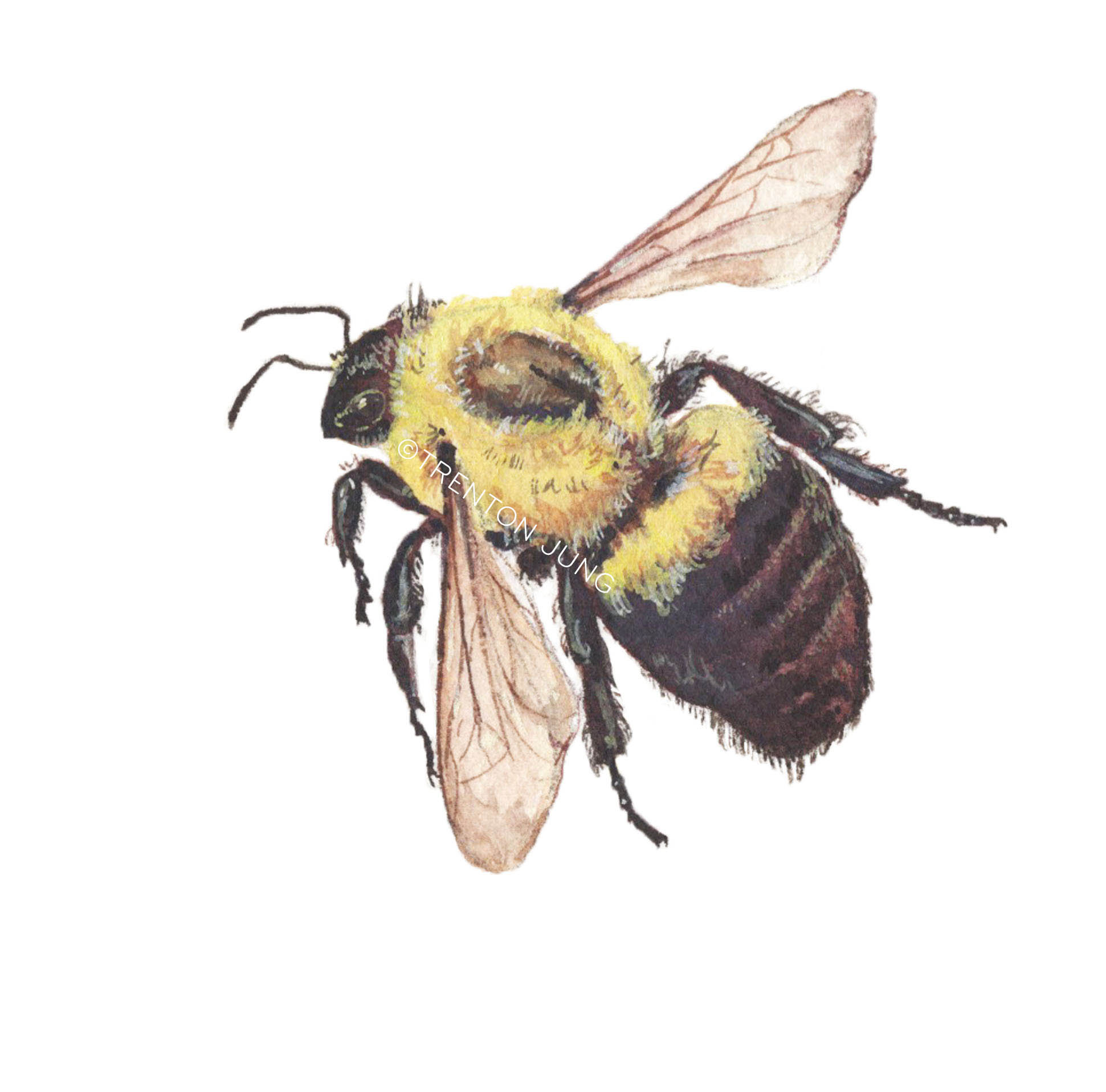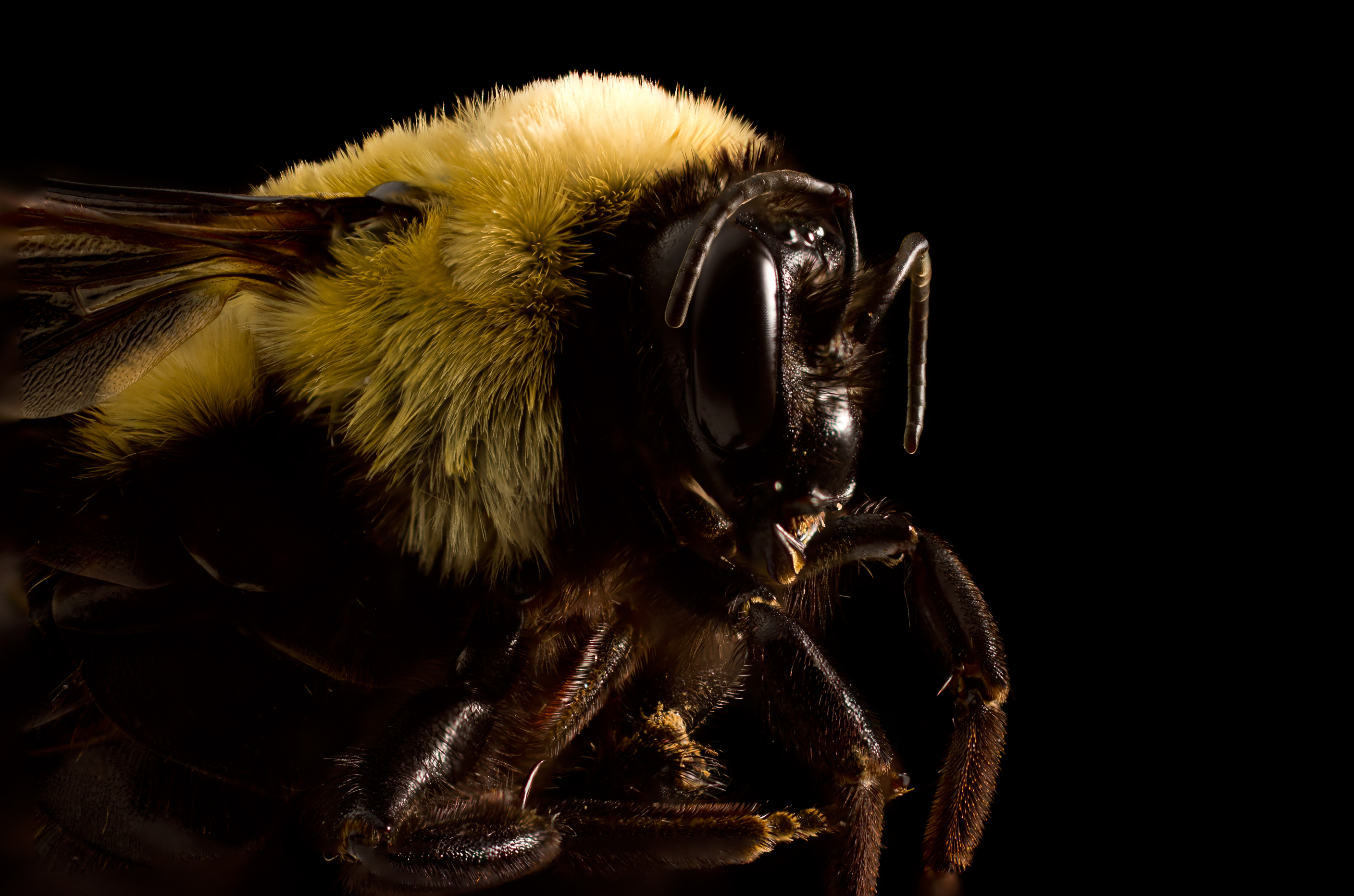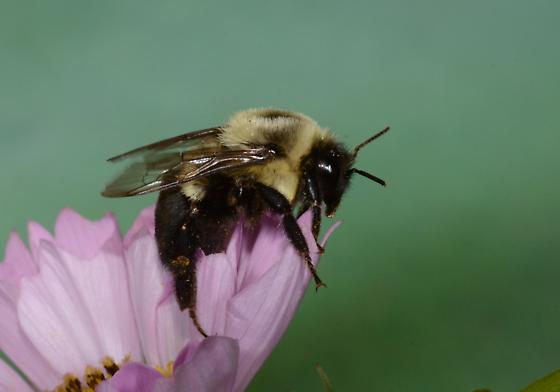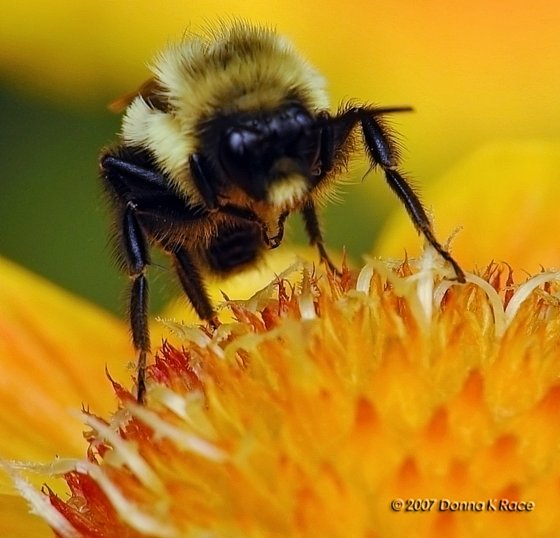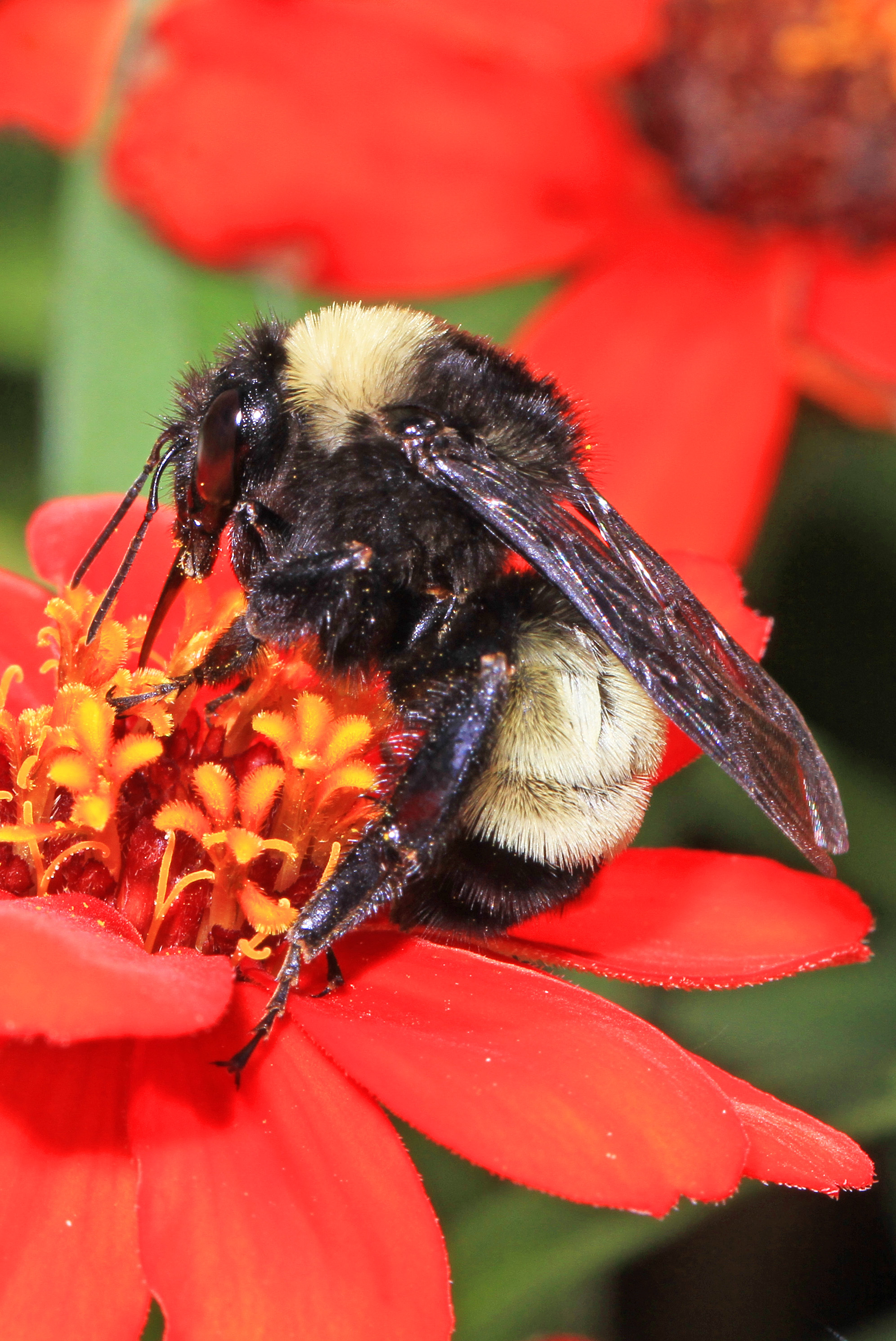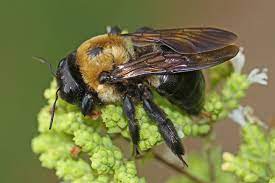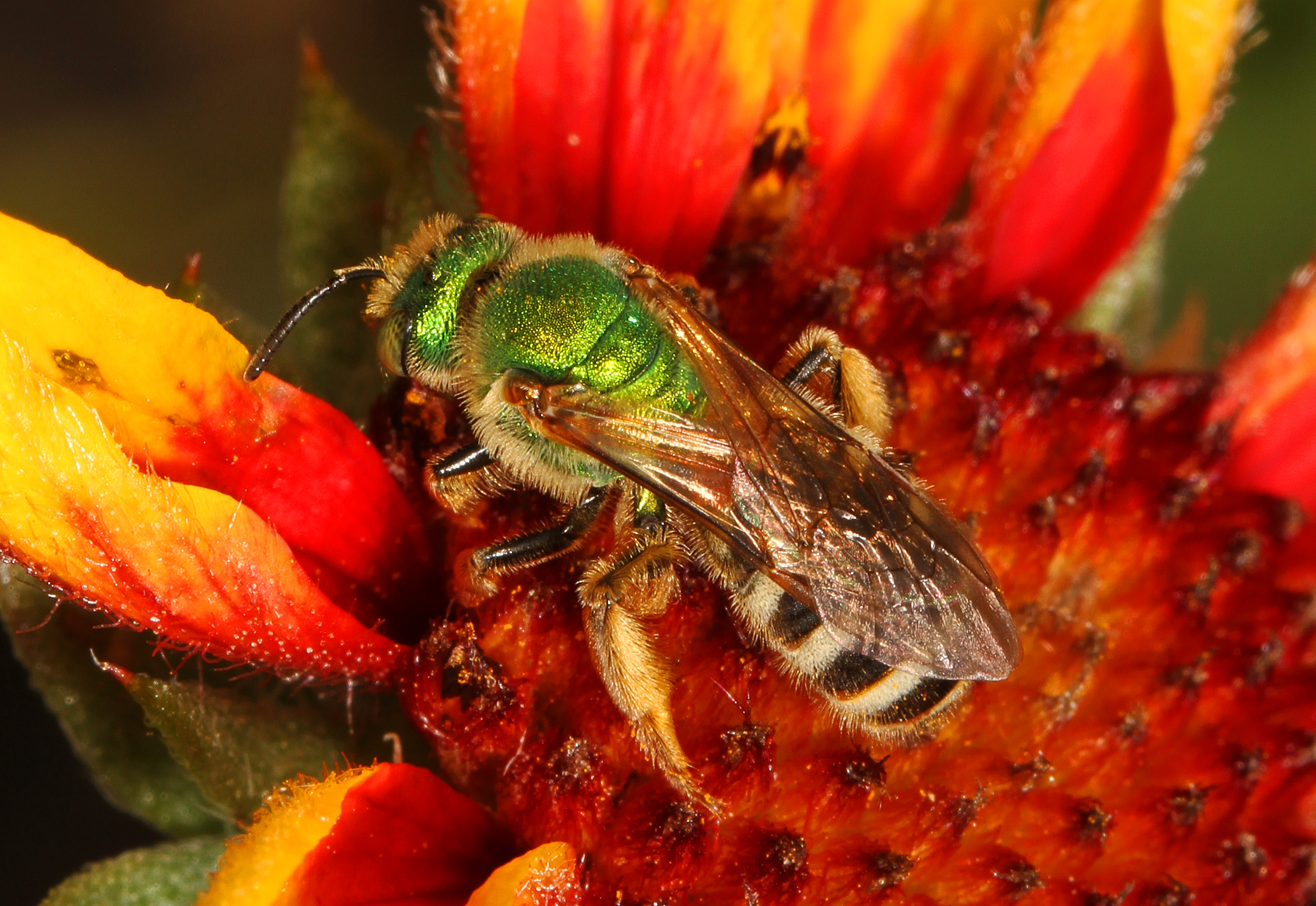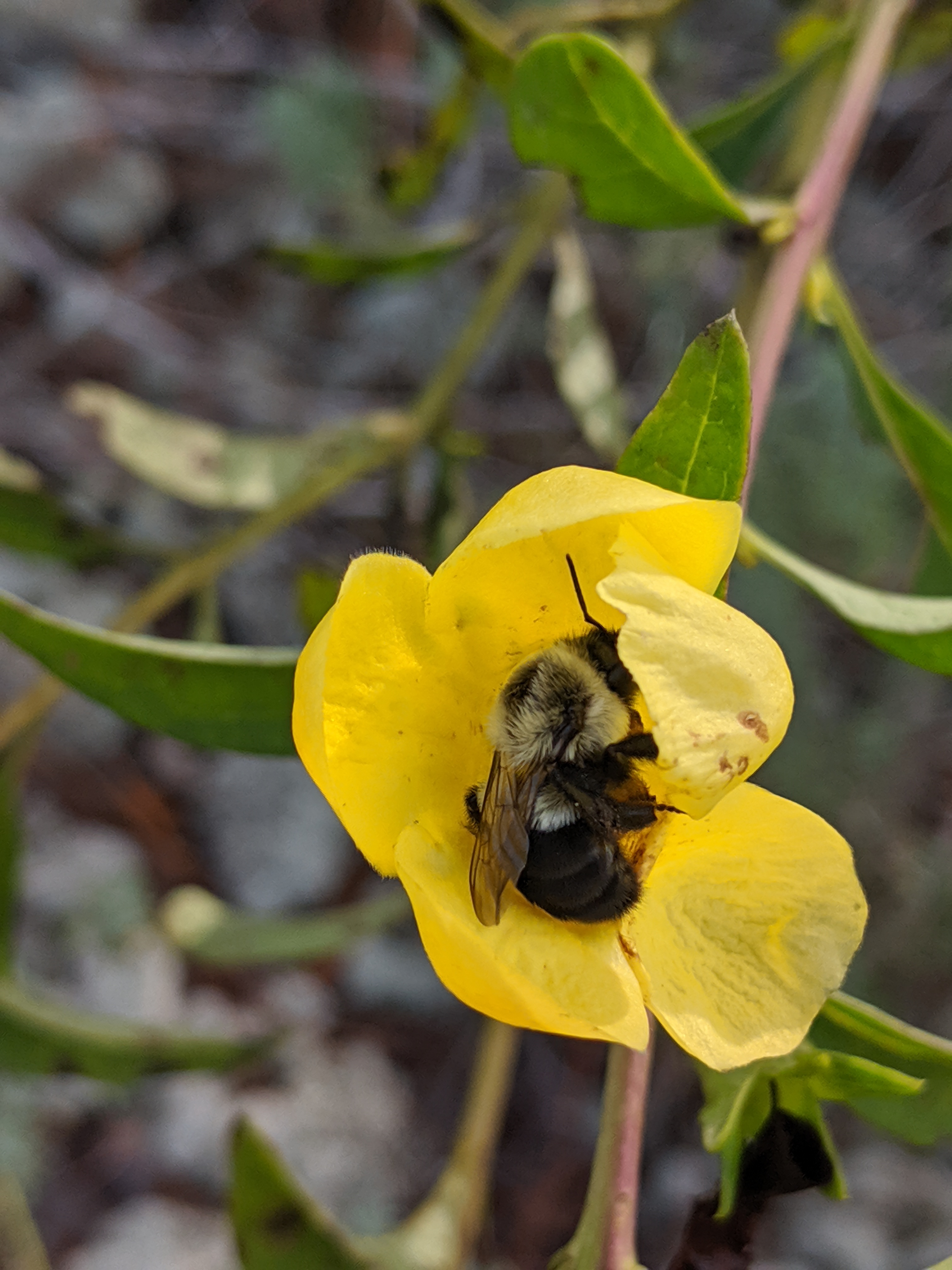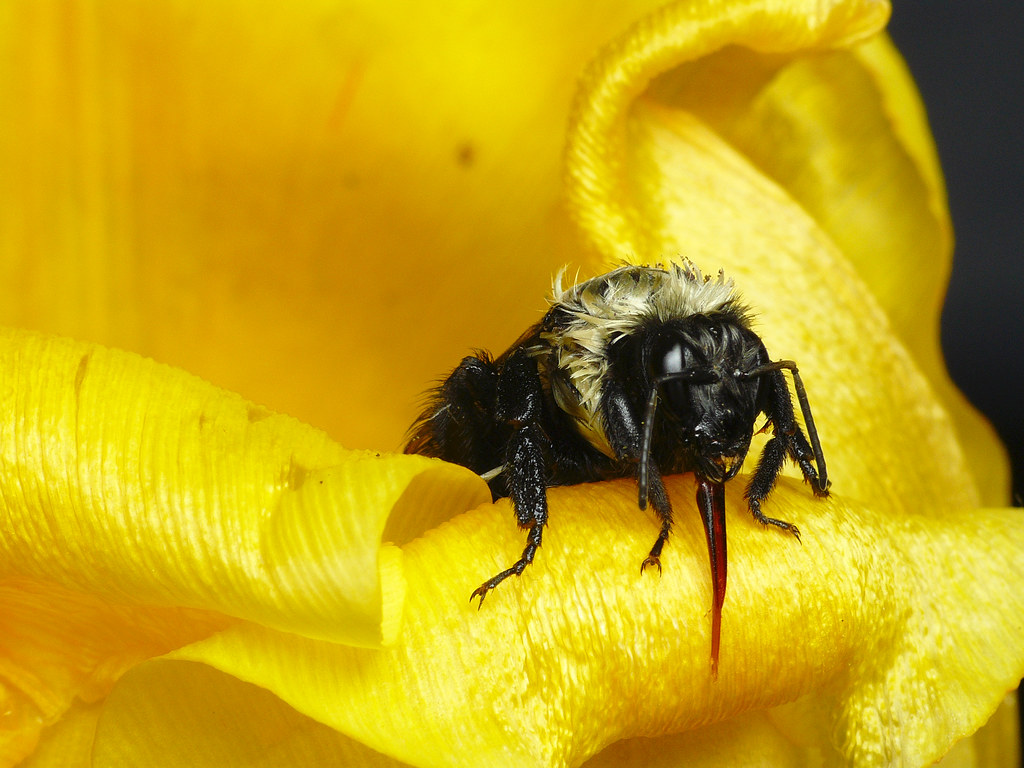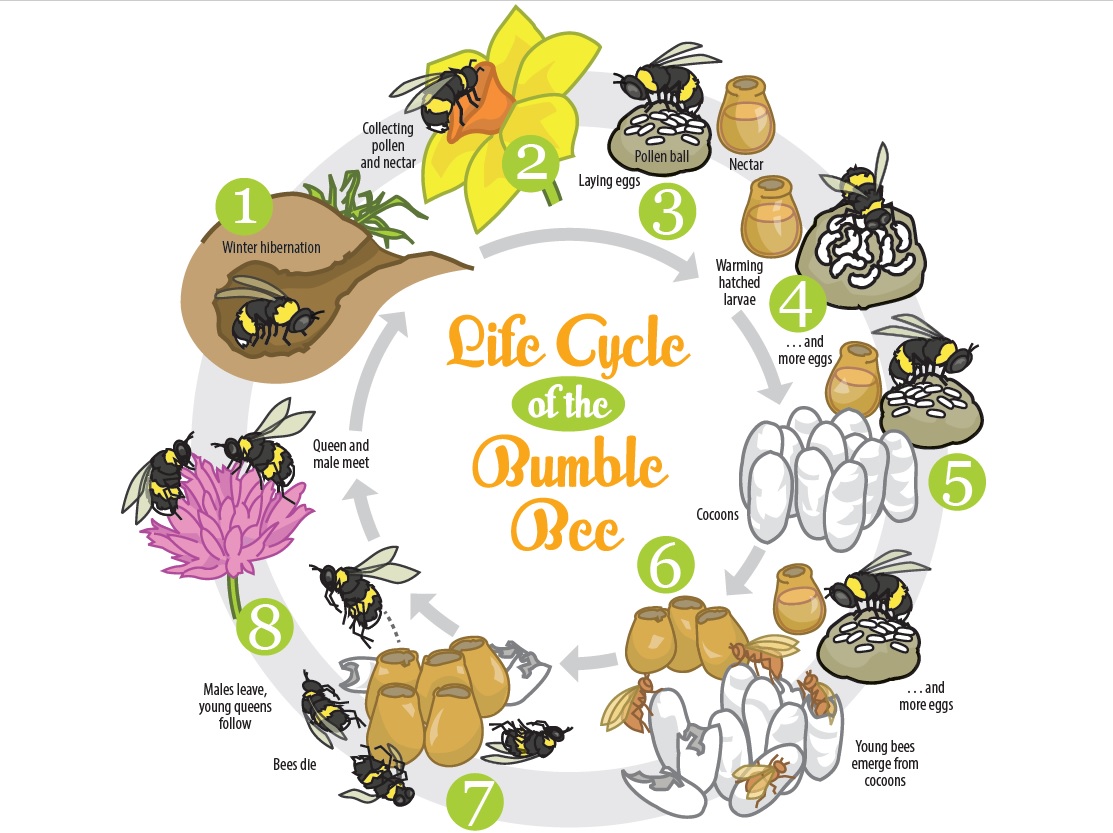Wonders of Wildlife: Eastern Bumble Bee
Eastern Bumble Bee Other Common Names: Common Eastern Bumble Bee, Common Bumble Bee Scientific Name: Bombus impatiens Found in Alabama: Statewide Diet: Herbivore (eats plants) |
|
| Eastern Bumblee Bee on Flower Wikimedia - Bob Peterson Click image to enlarge it |
Learn more about...
| CLASSIFICATION | ||
|
What type of animal am I?
|
|
|
| The Eastern Bumble Bee is an INSECT! | ||
| IDENTIFICATION TIPS | |
| ADULT BEE | |
|
Male (drone) Eastern Bumble Bee Illustration by Trenton Jung, 2018 Click on image to enlarge it |
|
|
|
|
|
|
|
| QUEEN | WORKER (FEMALE) | MALE |
|
|
|
| Examples of Bumble Bees in Alabama | ||
|
American Bumble Bee
Wikimedia - Judy Gallagher Click image to enlarge it |
Eastern Carpenter Bee Wikimedia - Judy Gallagher Click image to enlarge it |
Metallic Green Sweat Bee Wikimedia - Judy Gallagher Click image to enlarge it |
|
|
|
| ADAPTATIONS |
| PHYSICAL ADAPTATIONS |
| Eastern Bumble Bees have pollen pouches: |
|
| BEHAVIORAL ADAPTATIONS | |
| Eastern bumble bees are diurnal: | |
|
|
| Eastern bumble bees are efficient foragers: |
Eastern Bumble Bee on Smooth Yellow False Foxglove (Aureolaria flava)
Kristen Irions Click on image to enlarge it |
|
|
| Bumble bees can do a special type of pollination: | |
|
|
| Eastern bumble bees are able to thermoregulate: | |
|
|
| Eastern bumble bees are eusocial: | |
|
Queen Eastern Bumble Bee with Tongue Extended Flickr - Sankax Click on image to enlarge it |
|
|
| LIFE CYCLE | ||
|
Life Cycle of the Bumble Bee
R. Bishop, GWNews Click on image to enlarge it |
||
|
||
| Four Life Cycle Stages of the Eastern Bumble Bee | |||
| 1. Egg: |
|
||
| 2. Larvae: |
|
||
| 3. Pupa: |
|
||
| 4. Adult: |
|
||
| Life Span: |
|
||
| NATURAL Habitat Needs |
ADULTS | YOUNG |
| Food |
|
|
| Water |
|
|
| Shelter |
|
|
| Places to Raise Young |
|
| BACKYARD Habitat Needs |
ADULTS | YOUNG |
| Food |
|
|
| Water |
|
|
| Shelter |
|
|
| Places to Raise Young |
|
| ECOLOGICAL ROLE | |
| Bees play an important ecological role in the health of habitats and ecosystems. |
|
| Did You Know? | |
American Bumble Bee Cuckoo Bee Eastern Carpenter Bee
Leafcutter Bee Long-horned Bee Mason Bee Miner Bee Orchard Mason Bee Sweat Bee
|
|
|
Bumble Bees
as a Food Source: |
|
|
Bumble Bees as a Pollinator:
|
|
INFORMATION SOURCES FOR THIS SPECIES
 |
 USDA Forest Service and
Pollinator Partnership's Bumble Bees of the Eastern United State |
|
|
|
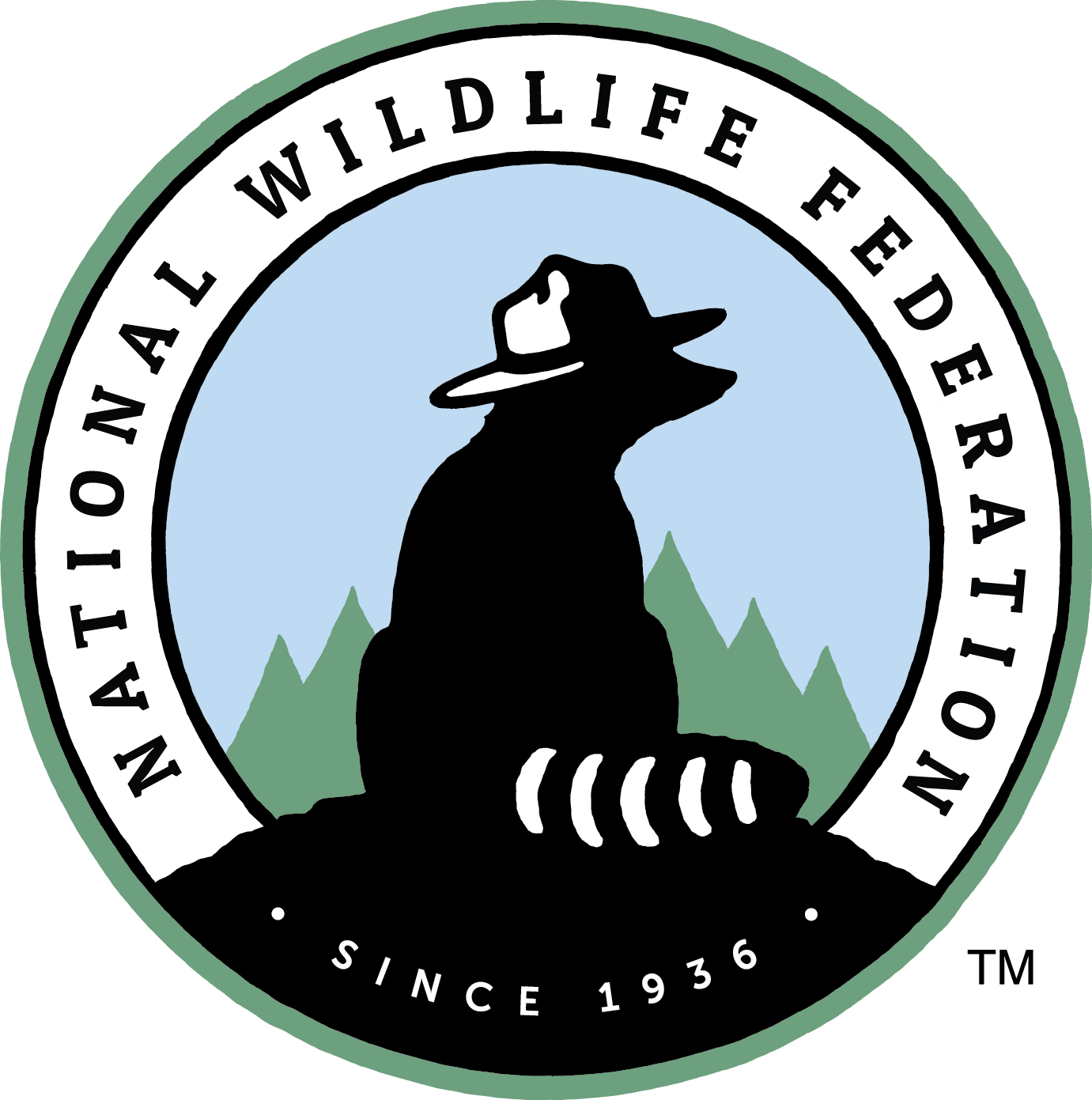 |
|
 |
 |
|
 |
||
 |
||
| Other Sources: University of California Agriculture and Natural Resource Montana Field Guide University of Wyoming, Department of Zoology and Physiology & Program in Ecology Journal of Economic Entomology: Volume 114, Issue 2, April 2021 - "Buzz-Pollinated Crops: A Global Review and Meta-analysis of the Effects of Supplemental Bee Pollination in Tomato" |
||
 Wildlife Tag
Wildlife Tag
